Written by: Pix
Compiled by: Luffy, Foresight News.
In every cryptocurrency cycle, there is a moment when wealth becomes visible. Not just on-chain or in portfolio screenshots, but in the real world.
A year ago, someone who was still unknown walked into a dealer store, bought a watch with cash, and then posted a photo of their wrist wearing it online. This moment, seemingly trivial, marks an important shift in market psychology.

Why watches?
The logic is simple. Rolex is a Veblen good (Note: items for which demand increases as price rises).
The higher the price, the more people want to buy. They do not showcase value through functionality, but through price. Because what people are buying is not practicality, but status and identity.
When the new wealthy class becomes suddenly rich, the first thing they want to do is let others know they are wealthy.
They will not buy farmland or government bonds. They will buy things that symbolize identity. Watches, cars, and sometimes they will buy JPEG-format NFTs (Note: Non-fungible tokens).
But the reality is not as simple as it seems at first glance...
The lagged response.
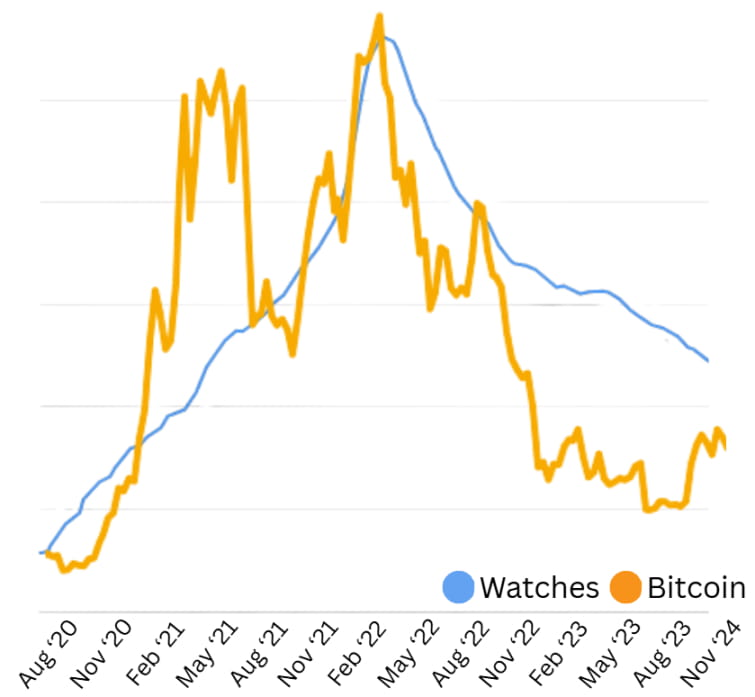
From 2020 to 2024, a comparison of the watch index with Bitcoin prices.
In 2021, most people believed that the market for luxury watches would rise along with cryptocurrencies.
But if you look closely at the time points, the watch market did not thrive when Bitcoin first reached its historical high. Rather, it was at the second peak when tokenized JPEGs (NFTs) were once traded at the price of houses.
The surge in Rolex prices is not the beginning of a bull market but the peak of a bull market.
The value of this phenomenon lies in the lag in the luxury goods market. The lag time is not long, but it just reflects the rules. This can be seen in the data.
The watch index lagged during the rise of cryptocurrencies, peaking slightly later, and then almost collapsing synchronously.
In the year following the cryptocurrency crash, Rolex prices dropped nearly 30%. Not because demand disappeared, but because the identity-driven demand that was driving it had exhausted.
This makes watches an unusual signal. They do not predict fundamentals, but rather reflect market sentiment.
Moreover, it is clearer than most of our existing indicators...
A different type of indicator.
In traditional finance, there is a volatility index. In the cryptocurrency sector, there is a funding rate. But both of these are indirect measures of market behavior.
Luxury goods are different. They not only tell you what investors are doing but also how investors feel.
They feel how wealthy they are and how much they want the world to notice them.
This is not flawless. But when you see watches being flipped at double retail prices, or someone posting their custom NFT Rolex, it usually means the market is approaching its peak.
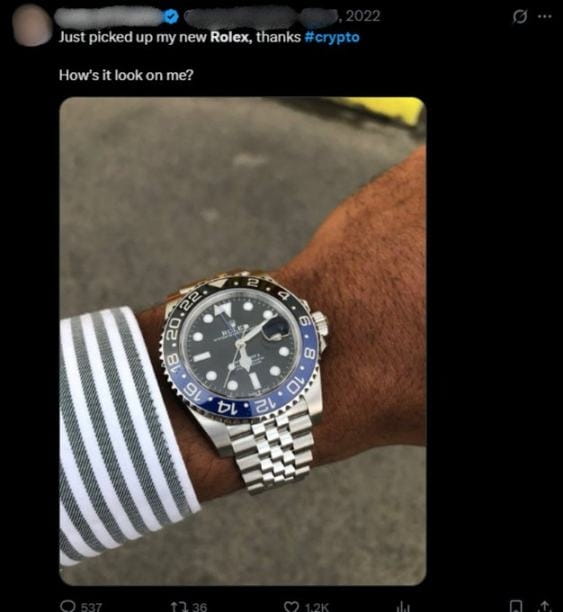
Because at that time, wealth has been earned and has entered the consumption phase.
So, what stage are we at in the cycle now?
Current cycle.
Currently, we are returning to the vicinity of historical highs. Bitcoin is rising, and Ethereum is also rising.
Even mainstream cryptocurrencies like ADA and XRP have risen by 50% in the past month.
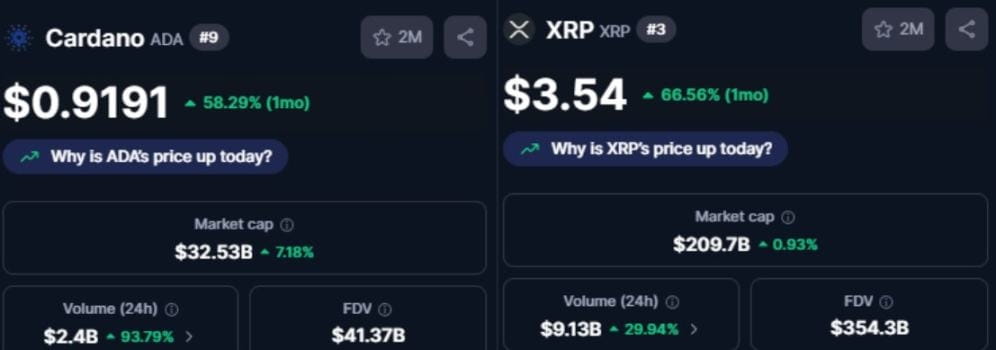
However... the Rolex market is quite calm. Prices are stable, and some styles are even unsold. Dealers haven't mentioned shortages, and premiums are not high.
At first glance, this seems like a bearish signal, but it may actually be the opposite. The fact is that the profits of this cycle have not yet widely spread.
The recent Memecoin craze has only created hundreds of millionaires. This is not enough to drive a market built on widespread speculative excess (referring to the watch market).
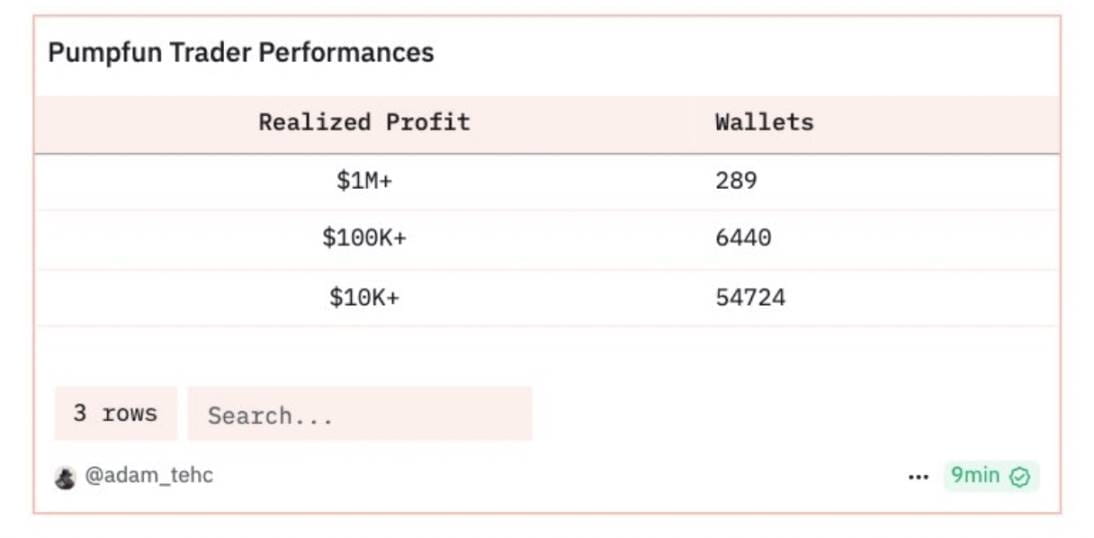
You can see signs of this pattern returning. More Rolex photos are appearing on Crypto Twitter (CT), and mentions are increasing, but it's still far from the heat of 2021.
It's also worth remembering that last time, the watch market didn't show volatility until the later stages of the cycle.
It was not at the first peak of Bitcoin, but after the second peak, at which point everyone felt rich and wanted to be noticed.
History doesn’t repeat itself, but it does rhyme.
In the past few months, the situation has changed. Bitcoin and watch prices have started to move in sync. Not perfectly synchronized, but a clear correlation has emerged.
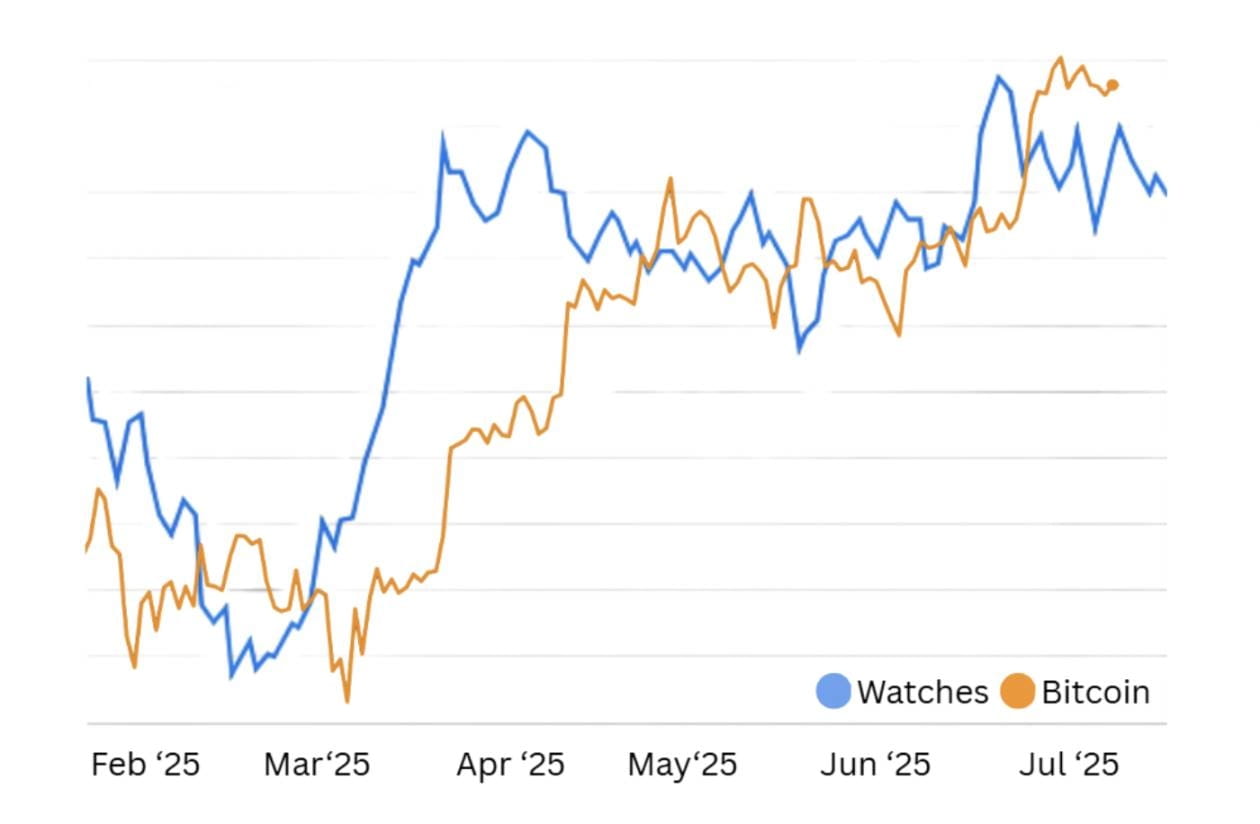
The last cycle was not like this. In 2021, the watch market lagged. First, cryptocurrencies rose, then came the NFT craze, and only then did Rolex prices skyrocket.
And this time, have watches started moving? Well, not exactly...
This time, the charts look different. Watches and Bitcoin began to rise almost simultaneously.
Since March, their trends have been almost synchronous. But if you extend the timeline, the situation looks different.
A more macro picture.
Bitcoin is close to its historical high, but watches are not. Most styles are still far below the peak of 2022.
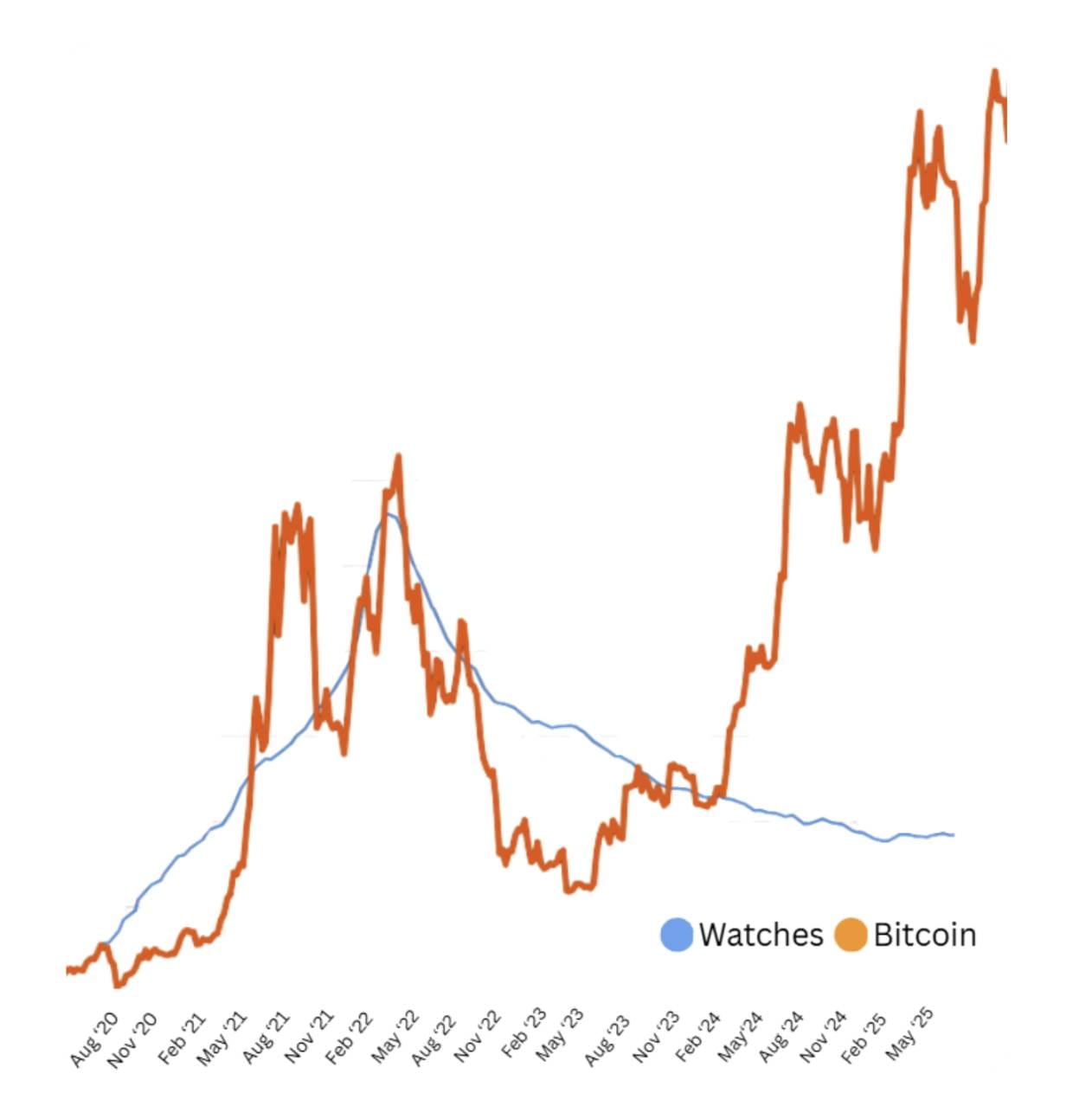
Aside from Rolex and Patek Philippe, the overall watch market is sluggish. Cartier, Omega, and even Audemars Piguet—prices are 30%-40% lower than retail.
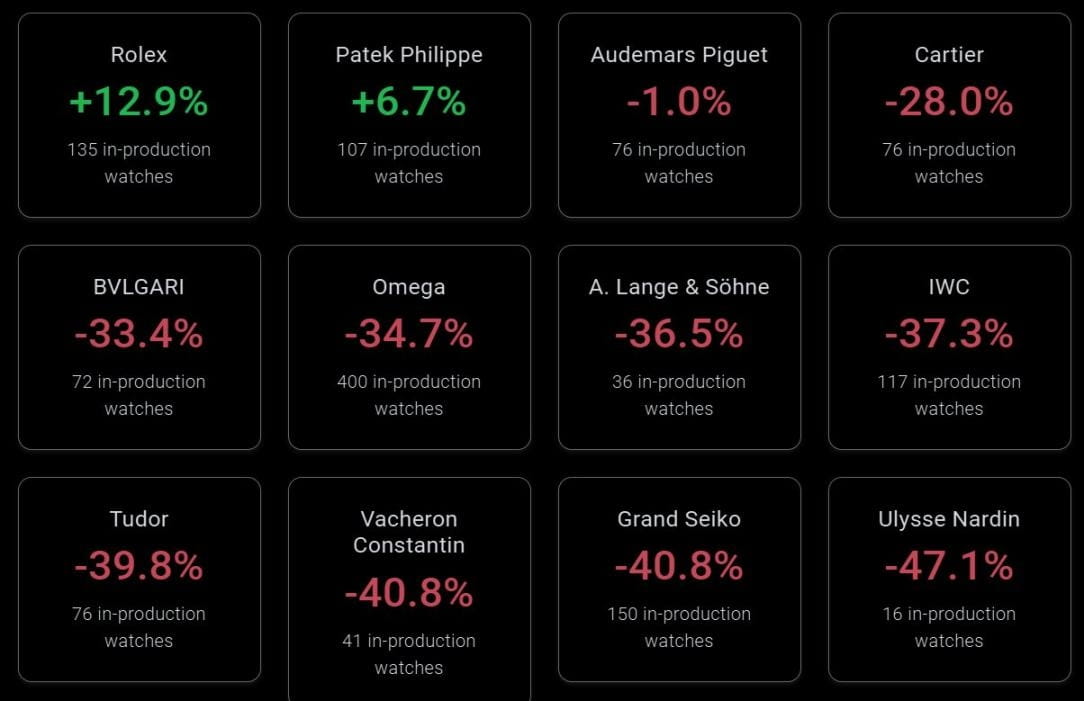
This is important because it conveys two messages.
First, we are not yet in the frenzy stage. Secondly, most watches are still poor investment items.
Their design purpose is not to retain value, but to showcase identity.
The rise in watch prices again does not mean we have reached the top of the cycle, but it does indicate that we have passed a significant portion of the cycle.
People will only start buying identity symbols when they feel the most difficult part has passed.
Typically, this is the middle of the cycle, probably around two-thirds of the cycle.
Wealth is accumulating, confidence is returning, but the real consumption wave has not yet begun. When the consumption wave arrives, you will notice it without charts; you will feel it.



